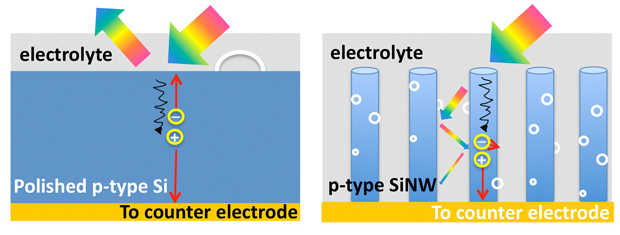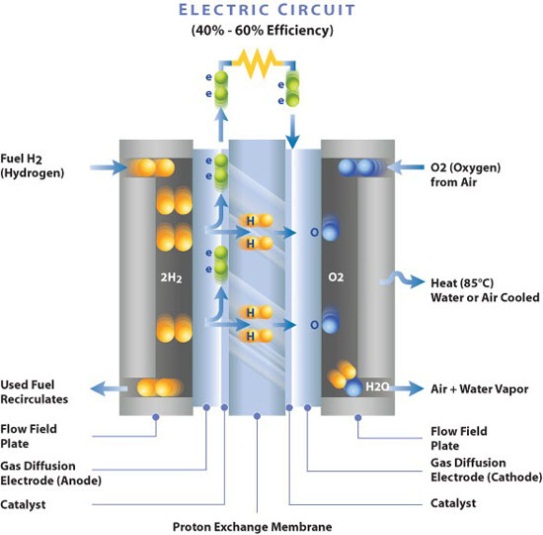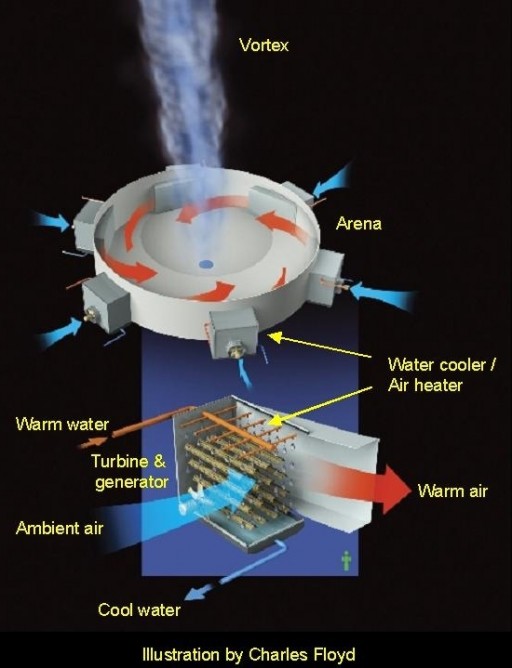SSFTV means Solar used hydrogen production, Solid state hydrogen storage, Fuel cell (PEM), Tornado power generation and finally Vapour absorption refrigeration cycle. This is a group of Green Technology ideas which can be used in corporates, industries and houses.
Fuel Cell and Green Technology - SSFTV
Gowtham.p, Gowthamachdran.s | Kumaraguru College of Tecnology
ABSTRACT:
The objective of this proposal is to provide ideas in the field of Green Technology and fuel cell. SSFTV means Solar used hydrogen production, Solid state hydrogen storage, Fuel cell (PEM), Tornado power generation and finally Vapour absorption refrigeration cycle. This is a group of Green Technology ideas which can be used in corporates, industries and houses. By this houses can be off grid from the electric stations. The use of batteries can be reduced.
HYDROGEN GAS PRODUCTION
The hydrogen gas is mostly produced mostly produced from the Natural gas. From this carbon dioxide is released as a byproduct. So it is not a clean energy. The hydrogen gas can be produced from the water by using Electrolysis process. In which platinum is used as an electrode. The cost of platinum is high, it ultimately increase the cost of installation of the production plant. So we are in the need of exploring a technique produces hydrogen gas rather by using platinum as electrode. The conventional method uses electricity.

NANO FOREST
The hydrogen is produced by using P type and N tpe Si semiconductor. These are manufactured in Nano trees which has large surface areas, by which it can capture sunlight in large quantity.

Electronic microscopic image of a ‘Nano forest’, with green tint added for contrast (Diego school of Engineering)
The Nanowires, which are made from the abundant natural materials such as silicon and zinc oxide, mimic the structure of a forest of a trees, with individual vertical “trees” sprouting hundreds of Nano-sized “branches”. Like forests, this structure maximizes the amount of solar energy that can be captured, with the vertical structures trapping and absorbing the light while the flat surfaces reflect it. Using this Nano tree structure, the reseachers were able to maximize the amount of solar energy captured for use in production of hydrogen in a process called photochemical water splitting. This process usually uses solar cells to produce hydrogen in a process similar to produce similar to the electrolysis of water, but this technique uses Nano wire array to produce more hydrogen fuel efficiently.
OPERATION
This technique uses P type and N type Si semiconductor. The P type semiconductor is exposed to the sunlight. The semiconductor has high affinity towards the electrons. When sunlight falls on the electrode some of the energy will absorbed by electrode and the other will be reflected towards down. The absorbed energy will create electron and proton. The proton will be attracted by N type electrode. The electron will move towards the electrolyte.
4e- + 2H2O à O2 + 2H2

The electron will react with the water molecule and produce oxygen and hydrogen gas. Thus the hydrogen gas is produced.
SOLID STATE HYDROGEN STORAGE
The produced hydrogen gas has to be stored efficiently and in high capacity. The three different storage of hydrogen are compressed, cryogenic and solid form. The disadvantages of compressed and cryogenic form are very combustible and at high pressure hydrogen gas is not dense enough for compact storage. In this method, the diffusion of hydrogen within the metal leading to formation of hydride. There are more than 50 materials are having the capacity of adsorbing the hydrogen in which Mg2Ni compound is best for storing hydrogen because it is not pyrophoric as lanthanum, high density and not combustible.
OPERATION
The hydrogen will be absorbed by the Mg2Ni and formed as a Mg2NiH4 as a reaction of physisorption. The hydrogen will be desorbed when a heat or energy is applied and bond will be broken.
INCREASING THE CAPACITY
The hydrogen adsorption can be increased by reducing the grain size of the metal compound. The adsorption of hydrogen increase when we replace polycrystalline metal with Nano crystalline sample. The temperature of adsorption for polycrystalline sample is 300ْ C but for Nano crystalline sample is 200 . The Nano crystalline sample can be produced by Ball milling process. The catalyst can be used to increase kinetics of the reaction. The catalyst has high efficiency in Nano size. The catalyst can also be produced in Nano size by Ball milling process. Palladium is the effective catalyst for formation of hydride. The Nano crystalline FeTi catalyzed by Nano particle of palladium adsorbs hydrogen without activation.

The palladium is used for increase in adsorption
DESORPTION TEMPERATURE
The main disadvantage of Mg2Ni compound is the desorption temperature is 300ْ C. Thus initially energy should be given to start the desorption. The metallic composite of Mg2Ni and FeTi can be used, because FeTi catalyzed by palladium has low activation energy (80ْ C), so small amount of energy is enough. The hydrogen released from FeTi can be used to operate fuel cell and then the heat released from fuel cell reaction can be utilized for further desorption of hydrogen from Mg2NiH4. When the system is cooling down the desorbed hydrogen from Mg2NiH4 can be absorbed by low temperature metal hydride FeTi, thus the system is ready for next cold start.
DESORTION OF CRYSTAL
The metallic hydride will distort after several cycle of operation. The distortion can be reduced by adding palladium. The distorted particle move along with hydrogen and it will affect reaction of fuel cell. This can be restricted by using activated carbon in hydrogen passage which allows only the hydrogen gas.
FUEL CELL
The Fuel cell is a device which is used to convert chemical energy into electrical energy. There are many types of fuel cells are used. In this system we use PEM fuel cell which is powered by hydrogen and oxygen gaas. The product will be water vapour and electrons.
PEM FUEL CELL
The PEM fuel cell consists of two electrodes, platinum as catalyst and photon Exchange Membrane (PEM). The PEM allows only proton to diffuse to the other side where oxygen is circulating.

The hydrogen and air are given in two sides of the device. The hydrogen on reaction with platinum catalyst will produce proton and electron. The PEM will allow only protons. The electrons move in the external circuit to other side. In other side the electrons, oxygen and proton come in contact and thus reaction occurs. The reaction will occur until the voltage two electrodes are maintained. If we cutoff the oxygen supply the voltage will goes to zero. The temperature produced in this process is 85 degree Celsius. This heat will be taken up by the water vapour coming out. The efficiency of the system is 50-55%.
DISADVANTAGE
The main disadvantage of this system is cost of production. The platinum is used as a catalyst for the process. The platinum cost high. If the fuel cell is mass produced the cost can be decreased.
ATMOSPHERIC VORTEX ENGINE
Tornadoes generally evoke the destructive force of nature at its most awesome. However, what if all that power could be harnessed to produce cheaper and more efficient electricity? This is just what Canadian engineer Louis Michaud proposes to achieve, with an invention dubbed the “Atmospheric Vortex Engine” (or AVE).
The waste heat from the fuel cell in the form of water vapour can be used for other renewable purposes. The steam from fuel cell can be used to run Atmospheric Vortex Engine.
"The power in a tornado is undisputed," work has established the principles by which we can control and exploit that power to provide clean energy on an unprecedented scale."

OPERATION
AVE works by introducing warm air into a circular station, whereupon the difference in temperature between this heated air and the atmosphere above creates a vortex – or controlled tornado, which in turn drives multiple wind turbines in order to create electricity. The vortex could be shut down by simply turning off the source of warm air.
The system produces no carbon emissions, nor requires energy storage to function, and that further to this; the cost of energy generated could potentially be as low as US$0.03 per kilowatt hour.

The heat required to get the mini-tornado started would be provided by a temporary heat source, such as a heater, or steam. However, AVE states that once the vortex is thus established, the continuous heat could then be provided by a more sustainable source – such as waste industrial heat or warm seawater.
VAPOUR ABSORPTION REFRIGERATION CYCLE
The vapour absorption refrigeration system is one of the oldest methods of producing refrigeration effect. The refrigerant, commonly used is ammonia. In the vapour absorption refrigeration system replaces compressors by absorber.
OPERATION
The system consist an absorber, a pump, a generator and a pressure reducing valve to replace the compressor of vapour compression system. The other components of the system are condenser, receiver expansion valve and evaporator as in the vapour compression system. In this system the refrigerant usually ammonia leaving the evaporator enters the where it is absorbed by the cold water in the absorber. The absorption of ammonia in water lowers the pressure in the absorber which in turn draws more ammonia vapour from the evaporator and thus raises the temperature of the solution. So some cooling arrangements are made. The strong solution thus formed in the absorber is pumped to the generator by the liquid pump. The pump increases the pressure of the solution upto 10 bar.

The strong solution of ammonia in the generator is heated by water vapour from the Fuel cell. During the heating process the ammonia vapour is driven of the solution at high pressure leaving behind the hot weak ammonia solution in the generator. This weak ammonia solution flows back to absorber at low pressure after passing through the pressure educing valve. The high ammonia vapour from the generator is condensed in the condenser to a high liquid ammonia. This liquid ammonia is passed to the expansion valve through a receiver and then to the evaporator. Thus waste heat from the Fuel cell is used for the refrigeration of house or corporates. This works silently because of absence of compressor.
CONCLUSION
Thus this group of technologies can be installed in the houses and corporates by which they can go off grid from electrical lines.
Acknowledgments
I thank my Professor, department staffs, friends and my family members who constantly encouraged me. I thank Almighty for giving me the great opportunity.
References
1.Ke Sun , Yi Jing , Chun Li , Xiaofeng Zhang , Ryan Aguinaldo , Alireza Kargar,” 3D branched nanowire heterojunction photoelectrodes for high-efficiency solar water splitting and H2 generation”, Nanoscale, 2012,4, 1515-1521, DOI: 10.1039/C2NR11952H.
2. G. Alefeld, J. Völkl (Eds.): Hydrogen in Metals II (Springer-Verlag, Berlin, Heidelberg, New York 1978)
3. L. Schlapbach (Ed.): Hydrogen in Intermetallic Compounds I (Springer-Verlag, Berlin, Heidelberg, New York, London, Paris, Tokyo 1988)
4. M. Terzieva, M. Khrussanova, P. Peshev, D. Radev: Int. J. Hydrogen Energ. 20, 53 (1995)
5.A. Zaluska, L. Zaluski, J.O. Ström-Olsen, Structure, catalysis and atomic reactions on the nano-scale: a systematic approach to metal hydrides for hydrogen storage, Centre for the Physics of Materials and Department of Physics, McGill University.
6. J.L. Iturbe-Garc´iaa; B.E. L´opez-Mu˜noza, R. Basurtoa, and S. Millan,” Hydrogen desorption process in Mg2Ni hydrides”.
7. Rifkin, J. The Hydrogen Economy; Tarcher/Putnam: New York, 2002.
8. A Multiyear Plan for the Hydrogen R&D Program, Rationale, Structure and Technology Roadmaps; U.S. Department of Energy, Office of Power Delivery, Office of Power Technologies, Energy Efficiency and Renewable Energy, 1999.
9. Keith, D. W.; Farrell, A. E. Science 2003, 301, 315–316.
10.http://cleantechnica.com/2012/12/18/using-tornadoes-for-good-not-evil-green-energy/
11.http://www.fastcoexist.com/1681094/harnessing-tornados-for-energy-and-more-the-radical-projects-funded-by-peter-thiel
12. http://www.gizmag.com/vortex-engine-tornadoes-electricity/25508/
13.R.S.Khurmi, J.K.Gupta,”Refrigeration and Air conditioner”.
Contact
Gowtham Palanivelu, B.E, Mechanical Engineering, second year, KCT, email id – godragoon@gmail.com
Gowthamachandran Sivasamy, B.E, Mechanical Engineering, second year, KCT, email id - s.gowthamachandran@gmail.com.
The content & opinions in this article are the author’s and do not necessarily represent the views of AltEnergyMag
Comments (0)
This post does not have any comments. Be the first to leave a comment below.
